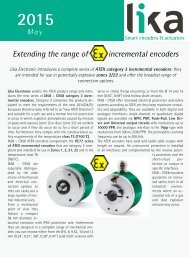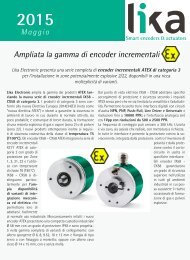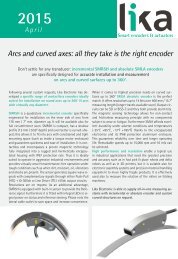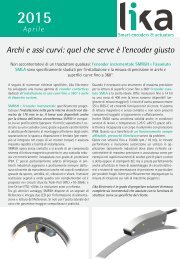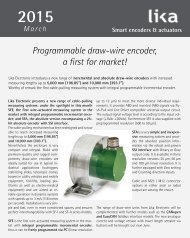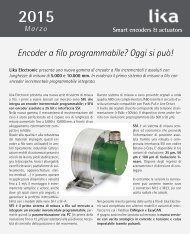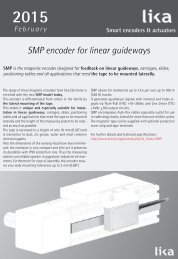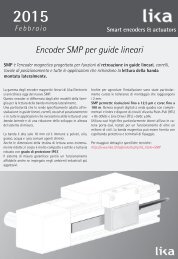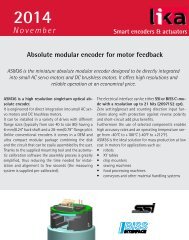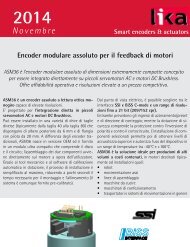LINEPULS & LINECOD catalogue 2016 in English
Lika Electronic incremental and absolute linear encoders catalogue 2016 in English Our new linear encoders catalogue is out now, and features many innovative new products and up-to-date information. The catalogue is expressly designed to set out the comprehensive range of incremental & absolute linear encoders from Lika Electronic. Check it out, it is completely renewed! Make sure you don’t miss out on a copy, download the pdf file from our web site or request your hard copy now! We have also got an interactive digital version in the works that shall be released soon!
Lika Electronic incremental and absolute linear encoders catalogue 2016 in English
Our new linear encoders catalogue is out now, and features many innovative new products and up-to-date information. The catalogue is expressly designed to set out the comprehensive range of incremental & absolute linear encoders from Lika Electronic. Check it out, it is completely renewed!
Make sure you don’t miss out on a copy, download the pdf file from our web site or request your hard copy now!
We have also got an interactive digital version in the works that shall be released soon!
Create successful ePaper yourself
Turn your PDF publications into a flip-book with our unique Google optimized e-Paper software.
<strong>LINEPULS</strong><br />
Output circuits<br />
1Vpp output circuit provides s<strong>in</strong>usoidal analogue signals phase-shifted by 90 electrical degrees<br />
(s<strong>in</strong>e and cos<strong>in</strong>e) for external <strong>in</strong>terpolation. S<strong>in</strong>usoidal signals have an amplitude of<br />
typically 0.5 Vpp (peak-to-peak) and a 2.5V offset.<br />
1Vpp output level results from differential signals detection. The frequency of the output<br />
signals is <strong>in</strong> direct ratio to the travel speed of the device.<br />
S<strong>in</strong>usoidal signals can be highly <strong>in</strong>terpolated by the follow<strong>in</strong>g electronics <strong>in</strong> order to <strong>in</strong>crease<br />
the resolution. In this way the transmission frequency along the cable is significantly<br />
reduced.<br />
A (cos<strong>in</strong>e) and B (s<strong>in</strong>e) signals (standard code sequence) plus 0 signal are shown <strong>in</strong> the Figure.<br />
1Vpp s<strong>in</strong>/cos (code V)<br />
Advantages: s<strong>in</strong>usoidal signals can be highly <strong>in</strong>terpolated, thus <strong>in</strong>creas<strong>in</strong>g the resolution<br />
and reduc<strong>in</strong>g the transmission frequency over long cables.<br />
Disadvantages: needs electronics for <strong>in</strong>terpolation.<br />
Power<br />
supply<br />
(V<strong>in</strong>)<br />
Max.<br />
output<br />
current<br />
Peak<br />
output<br />
current<br />
Thermal<br />
protection<br />
Shortcircuit<br />
protection<br />
Inverted<br />
signals<br />
+5Vdc 40 mA 80 mA - - •<br />
Max.<br />
cable<br />
length<br />
50 m /<br />
165 ft<br />
Recommended <strong>in</strong>put circuit<br />
V REF<br />
= 2.5V ± 0.5V V A<br />
= 1Vpp * Av Av = R2/R1<br />
32




